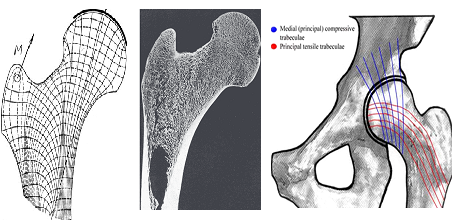
Bone rebuild in osteoporosis - a review
Abstract
Introduction: Osteoporosis is a silent disorder characterized by a T score of less than -2.5 in bone densitometry. Bone loss starts from the age of 30 to 35 and progresses further after menopause. It can be alleviated by vitamin D and calcium supplement. More effective anti-osteoporotic medication has been marketed like Fosamax, Actonel and Evista. Despite the medical advance, wrist fractures, vertebral collapse and hip fractures are still common in Hong Kong.
Method: Bone response to compression is first confirmed by literature review. Then local statistics will be studied to point out the severity and the medical expenses on osteoporotic bone fractures. Finally, exercises with axial loading forces acting on radius, vertebrae and femur are proposed to strengthen bones and prevent osteoporotic fractures.
Results: Straight punch, weight lifting and breaststroke swimming style cause pulsatile axial compression of bone trabeculae of distal radius, vertebrae and femoral neck. Regular practice of these exercises will strengthen the bone architecture and prevent wrist, vertebral and hip fractures.
Conclusion: Suitable exercise is supplementary to medication in preventing osteoporotic bone fractures.Â
Full Text:
PDFReferences
Osteoclast and osteoblast. Wikipedia.
Xu Cao. Targeting osteoclast-osteoblast communication. Nature Medicine 17, 2011; 1344-1346.
Bone quality and osteoporotic fracture-National Osteoporosis Foundation, summer 2007.
Luisella Cianferotti. Pathogenesis of Osteoporosis. Osteoporosis, Feb 2013; p 6-21
Pathogenesis-of-osteoporosis. UpToDate
Understanding the Bone Density T-score-American Bone Health
Homminga J. Osteoporosis changes the amount of vertebral trabecular bone at risk of fracture but not the vertebral load distribution. Spine, 2001 Jul 15;26(14):1555-61.
Carter, Dennis. Mechanical loading histories and cortical bone remodeling. Calcified Tissue International; 1984 Supplement, Vol. 36 Issue 1, pS19-S24, 1p
Fields, Aaron J. Influence of vertical trabeculae on the compressive strength of the human vertebra. Journal of Bone & Mineral Research; Feb2011, Vol. 26 Issue 2, p263-269.
J. B. Meade. Bone remodeling due to continuously applied loads. Calcified Tissue International; 1984 Supplement, Vol. 36 Issue 1, pS25-S30, 1p
T. Kubota. Influence of an intermittent compressive force on matrix protein expression by ROS 17 / 2.8 cells, with selective stimulation of osteopontin. Archives of Oral Biology. Volume 38, Issue 1, January 1993, Pages 23-30
Narihiro Mitsuia. Optimal compressive force induces bone formation via increasing bone sialoprotein and prostaglandin E2 production appropriately. Life Sciences. Volume 77, Issue 25, 4 Nov 2005, Pages 3168–3182
Osteoporosis Symptoms-Mayo Clinic.
Hip-Wikipedia
How to increase bone density. LIVERSTRONG.COM
C.H. Turner. Three rules for bone adaptation to mechanical stimuli. Bone. Volume 23, Issue 5, November 1998, Pages 399–407
J Wolff. Das Gesetz der Transformation der Knochen Hirschwald, Berlin 1892.
F. Pauwels. Biomechanics of Locomotor Apparatus Springer, Berlin 1980.
Ross PD, Knowlton W. Rapid bone loss is associated with increased levels of biochemical markers. J Bone Miner Res 1998 Feb; 13(2): 297-302.
Sonia A Talwar. Bone Markers in Osteoporosis. Medscape, Dec 16, 2014.
Refbacks
- There are currently no refbacks.
